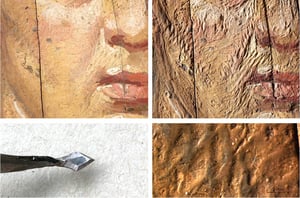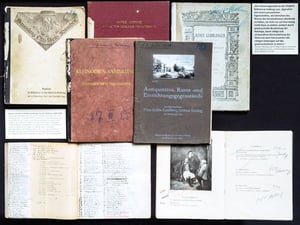The history, recent discovery and German transcription of the “Milan Diary” of the art historian Ludwig Heinrich Heydenreich
Ludwig Heinrich Heydenreich was the founding director of the Zentralinstitut für Kunstgeschichte (1947-1970) and a former member of the German Military Art Protection Unit in Italy (1943-1945).
As a unique piece of historical evidence, the diary of Ludwig Heinrich Heydenreich published here as a reproduction and transcription, covers a period of about two and a half months, from July 29 to October 16, 1944. Heydenreich describes mainly business processes, plans and meetings on various topics and issues. As Acting Director of the Kunsthistorisches Institut in Florence (KHI) since autumn 1943 he was a honorary staff member of the “Deutscher Militärischer Kunstschutz” in Italy. When the KHI library was transported to Germany in February 1944, and the city of Florence vacated in June 1944 by the Germans, Heydenreich continued his work in Milan. A detailed account of professional activities, the publication of the document allows the study, investigation and analysis of protection efforts in a time period characterized by destruction, racial war, and extermination.
The diary was discovered in May 2012 in the same steel cabinet that had also contained the – long thought to be lost and recently published – Habilitationsschrift by Erwin Panofsky. The transcription of the handwritten text begun by Stephan Klingen in summer 2012 was continued and completed by Jacqueline Falk in February 2017.
The diary in the right stack indicated by the distinctive red book edge
The diary showcase the entire diary and a German transcription of Heydenreich’s writing. The standard of strictly philological editions was not in the main focus for transcribing the diary. The goal was to prepare a unique historical source so that it becomes part of the scientific discussion on cultural transfer of objects in the second world war. The selected form of presentation – scanning and transcription side by side – allows an immediate review of reading results. Ambivalence, ambiguity and confusion were marked accordingly in the transcription with the symbol: [?]. Clearly typographical or orthographic errors are marked with [sic]. To disrupt the reading flow as little as possible, the number of comments was limited to those cases in which a person or a situation has been mentioned in the research literature. These references are, however, limited.






